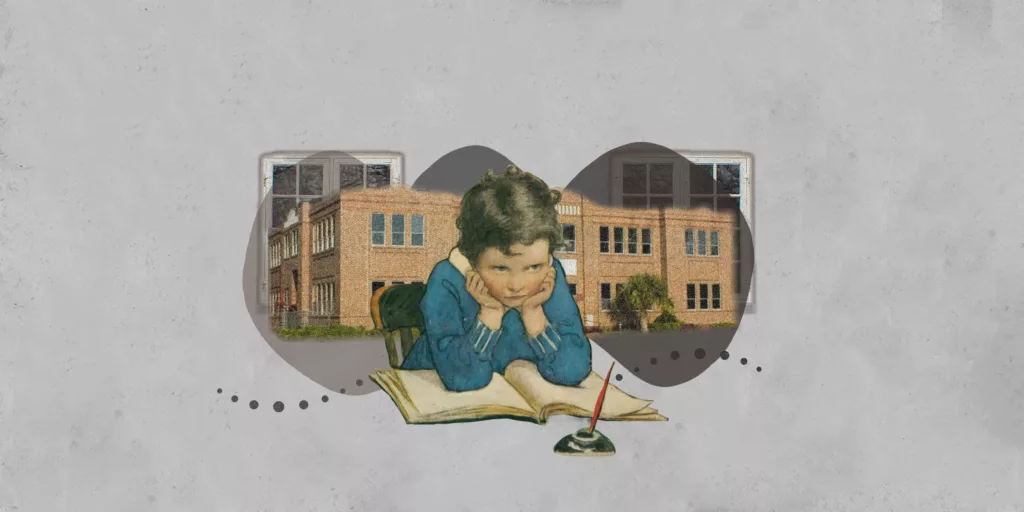
Every child has the right to education. This is not limited to the curriculum; it expands to the environment and the safety of the schools.
According to Article 3 of the Convention on the Rights of the Child, countries must ensure that schools, institutions and services that are responsible for the care of children follow certain rules. These rules are about keeping things safe and healthy, having the right number of staff, and making sure someone is watching out for the children.
Unfortunately, some state schools in Armenia have poor conditions, such as a lack of heating and deteriorating interiors, that make children and their learning environments vulnerable, depriving them of these rights. While some children receive a quality education, the majority of Armenian schools are in poor conditions and fall short of providing secure spaces for their students. This is not only the case in villages but also in the heart of Yerevan. There is an urgent need to address these conditions and advocate for the well-being and education of Armenian children.
Arthur Hambardzumyan, DS sophomore, attended School No. 83 named after Hambardzum Galstyan, and shares his first-hand experience regarding the dismal conditions of the school, especially in the winter months. “When it was raining or snowing, water and snow would drop from the ceiling and the cracked walls, so the school staff placed buckets in the hallways,” Arthur explains.
Like many schools in Armenia, Arthur’s had not been renovated for a long time. The walls were cracked, doors and windows didn’t have handles or knobs; there is a hole instead of a door knob, so kids have to use that to open and close them. The gymnasium had nails coming out of the floorboards, making it treacherous for the students during their activities.
Children spend most of their days in schools and consider them their second home–a safe haven to grow up and learn without fearing for their safety. Research done by experts at the World Bank Group claims that floods by intensive rains and exposure to hazardous materials or lack of maintenance pose a great challenge to the students’ academic performances.
Arthur mentions that although students complained about the partially renovated school, it did not matter to him as he enjoyed his classes. “We were not paying any attention to that. There were some flaws that we noticed and wished that the chairs were more comfortable, for example,” Arthur says, adding that what mattered the most was the classroom environment and his relationships with peers and teachers.
Ruben Malayan, lecturer at AUA, was invited to give a lecture at the school Mkhitar Sebastatsi in November this year. He noticed that, although clean, the school looked wretched. “It’s not a stimulating environment. It means that you try to create an aesthetically pleasing environment,” Malayan explains. “The school needs to maintain this, not just clean, but also painted walls; everything needs to feel new.”
When he walked into the school, Malayan’s first impression was that the buildings looked like boxes. The children are growing up in a box-like environment, which can potentially hinder their learning experience. “The satisfaction with the learning environments has clearly a deeper dimension than just an infrastructure condition,” as mentioned in the World Bank Group research.
Sarkis Keshishian, student counselor at AUA, gives further insights on the effects of poor infrastructure of schools on students’ learning. “A neglected school may send a message to students that their education is not a priority, potentially impacting their motivation and sense of purpose,” Keshishian asserts. These conditions also affect the psychological well-being of students, making them feel stressed and worried. “Students may develop a sense of hopelessness and resignation, believing that their educational environment reflects their prospects. This mindset can be detrimental to their mental health and aspirations,” he adds.
These conditions should change. The first step is amplifying the students’ and parents’ concerns over the issue. They can start a petition to raise this critical concern to the school management and the municipality. Parents care about the environment in which their children spend most of their time. It is a substantial problem that should be resolved. These problems are not always due to the lack of funding and may arise from insufficient care and will. “First, the school management should raise their standards; it’s the perception of what is good enough,” Malayan suggests. If the root problem comes from financial difficulties, the school management can organize fundraisings or cooperate with the government.
As AUA students, we are privileged to be part of an institution that provides us with a safe environment to learn and grow. The children in public schools also deserve to be protected in their learning environment. Our role is to raise this issue and be part of the change in this movement.













